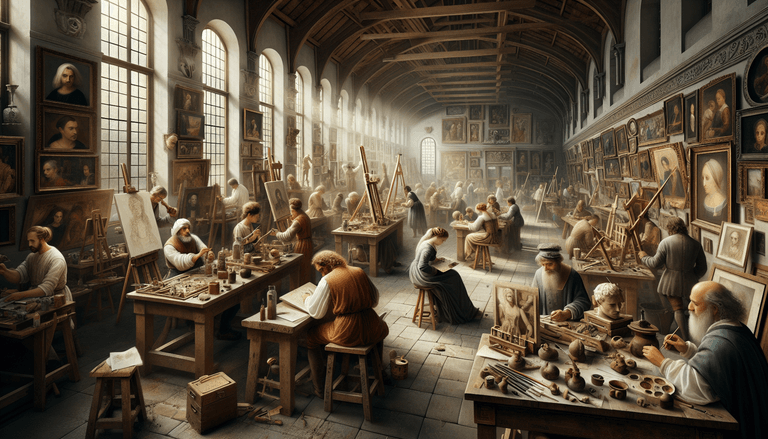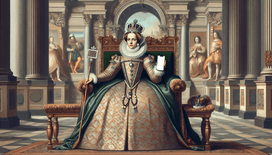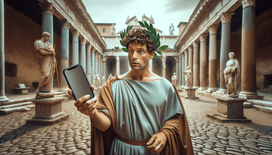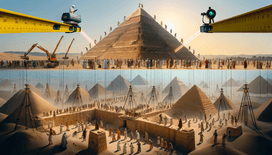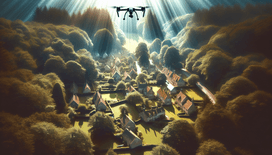Ah, the Renaissance! A period of human awakening, enlightenment, and chequered tights. It was a time when the world danced to the tune of new art, science, and fashion faux pas. But imagine, if you will, the Renaissance Redux. What if those brilliant minds had possessed a tool like Adobe Photoshop? How would Botticelli have coped without the tedious task of actually painting each brushstroke by hand? Would Michelangelo have airbrushed the ceiling of the Sistine Chapel? And more importantly, would the Mona Lisa have managed a slightly less enigmatic smile?
When Retouching Was 'Arte'
Let’s set the scene: It’s Florence circa 1500, the bustling heart of Italy’s intellectual and cultural resurgence. In this vibrant world, our dear friend, and artist extraordinaire, Leonardo da Vinci has just discovered Photoshop. Naturally, he establishments himself as the Renaissance’s leading influencer, impossible to miss with his endless selfies and digital enhancements posted all over 'Cyborg Florence Book' or CFB for short.
Imagine his 'Vitruvian Man,' gleaming with a perfectly even tan, courtesy of the exposure tool. Talk about mastering the art of symmetry! With a couple of clicks, he could have added funky filters, rendering it in monochrome or sepia, evoking a sense of nostalgia centuries before it was cool.
Selfies with Self-Portraits
Admittedly, the Renaissance was no dull affair in its original form, but compare an arduous self-portrait session to a quick selfie stick snap. It's fair to say this new technology would have caused quite the spectacle. Portraitists like Raphael would have been clicking away more than painting, perhaps exclaiming, “Paint_slash_undo,” as they goofed their way through sittings with amusing authenticity.
Why spend weeks on a portrait when one could simply catch an angelic light from a window, capture it with a camera obscura, and apply a tasteful tinge in post-production? Indeed, the Renaissance patrons would have been queueing to commission portraits quicker than a court messenger with a fourth cup of espresso.
The Battle of Brushes
Now let us turn for a moment to the infamous artist rivalries of the day, sometimes resulting in paintbrush brawls or hurriedly scribbled swear words under works of art. Photoshop might have put an end to such quarrels! Rival artists could merely challenge their competitors to a digital duel, a Photoshop-off, where heroic layers stood as shields, and the mighty clone tool as the ultimate sword.
Imagine a scenario with Titian shouting, “My shadows are better than yours!” or Caravaggio grumbling about someone adding too much noise reduction to his chiaroscuro. Arguments fuelled by coffee as black as ink, these rivals' egos might have been barely bandaged by the masking tool alone.
The Sistine Scroll and Ctrl-Z
Potentially the most profound change of all lies in the Sistine Chapel. The majestic vault, requiring four years of back-breaking work by Michelangelo, could have been subject to the magic of digital deference. Rome's Pope Julius II, upon seeing the heavenly grandeur completed in a mere fortnight thanks to digital brushes and a few quick Ctrl-Zs would have been astounded, naturally exclaiming, “Bella adjunctione!” – or, “Lovely addition!”
Let us not forget the murals interdisciplinary potential. Imagine Michelangelo collaborating with da Vinci, every mishap corrected by the undo tool, every vision expanded by a layer of possibilities. It would end with a tableau magnifique, enrapturing even the most jaded Florentine critics.
The Mona Memes and Legacy
Finally, let us not ignore the digital age’s pièce de résistance, memes. Picture, if you will, the Mona Lisa making its way across a lavishly-inked parchment, imprinted with captions of wry irreverence: “Did you get that? No, it’s not Photoshop…” and “Vinci-ving it in style.” Every courtier would be hamming it up at this classic conceptual jest.
The composite legacy of art in a digital Renaissance would likely be painted with more than one outrageous brush. The vast murals and detailed sketches would remain cherished history, hosting hidden layers of irony. Who knows, perhaps our cultural longings would teleport us back to embrace the real brush and canvas, reminding us that art, in its purest form, is about the journey, not the destination, regardless of whether said journey includes Cmd+S every five seconds.
